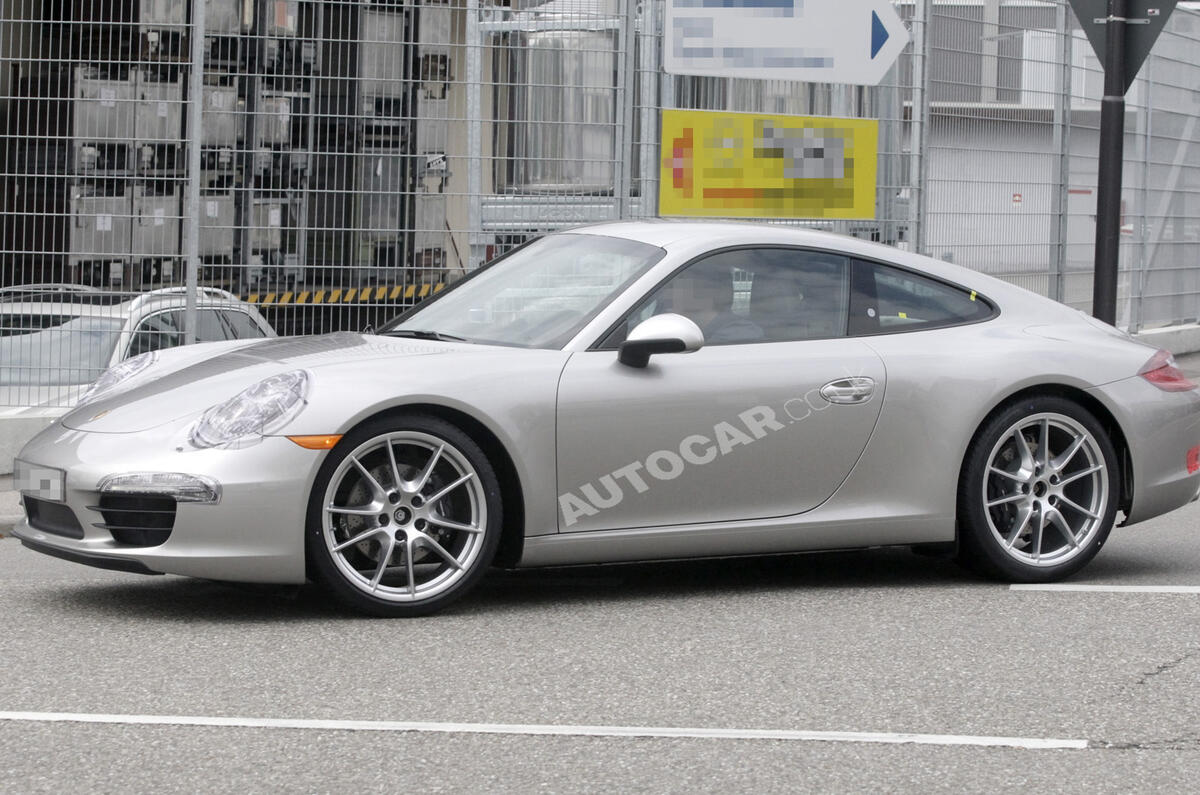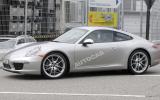The evolutionary styling of Porsche’s all-new 911 has been mostly revealed in these near-undisguised scoop pics, taken just weeks before the iconic sports car makes its world debut at the Frankfurt motor show.
Penned under Porsche design boss Michael Mauer, the latest 911 — codenamed 991 — sticks with the tried and trusted formula of subtle design changes rather than a ground-up rethink.
See all the spy pics of the new Porsche 911
At the front, the light disguise reveals a cleaner, sleeker new look for the bumper, air intakes and headlights, designed to boost aerodynamic efficiency. New LED detailing inspired by the 918 Spyder concept also features.
On the sides, door mirror housings now sit outboard on the doors rather than in the blanked-off quarter panel at the base of the A-pillar.
Read about our first ride in the new Porsche 911
The biggest changes are at the rear. The spied car reveals the sleeker design for the slimmed-down tail-lights. The electrically operated rear wing (not deployed here but visible as the step above the rear lights) is reshaped for improved aerodynamic efficiency and to increase downforce above 75mph. Elsewhere, the number of openings in the engine cover has been reduced from five to three.
While the 911’s basic design philosophy remains unchanged, its proportions have been tweaked to improve safety and stability, and to improve interior space, chiefly rear legroom. The wheelbase has been lengthened with the front and rear overhangs reduced to minimise the increase in overall length. At 4491mm long, 1873mm wide and 129mm high, the new 991 will be 56mm longer, 65mm wider and 11m lower than the 997.
The new model retains the rear-engined layout of every 911 since the original was introduced in 1963, albeit with modifications to the engine mounting points, which have been optimised for improved weight distribution.
As with today’s 911, the front-end structure, complete with its MacPherson strut suspension, has been designed to be shared with the third-generation Boxster, due in 2013. The new 911’s rear end, with its reworked multi-link suspension, remains largely unique, however, while the steering uses an electro-mechanical set-up for the first time.
The chassis is mainly made from aluminium, another 911 first, with high-tensile steels featuring in the crash structures. The bodywork is also chiefly made from aluminium, with steel used at the rear. The result of its extensive aluminium construction is a 45kg reduction in kerb weight, despite the car having larger wheels, tyres and brakes.












Add your comment